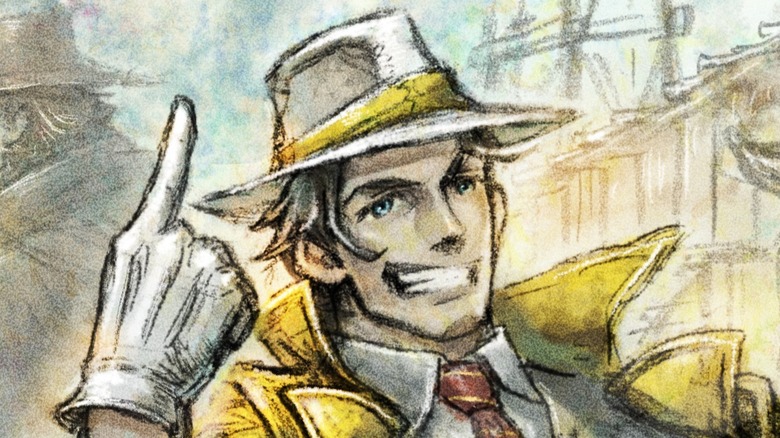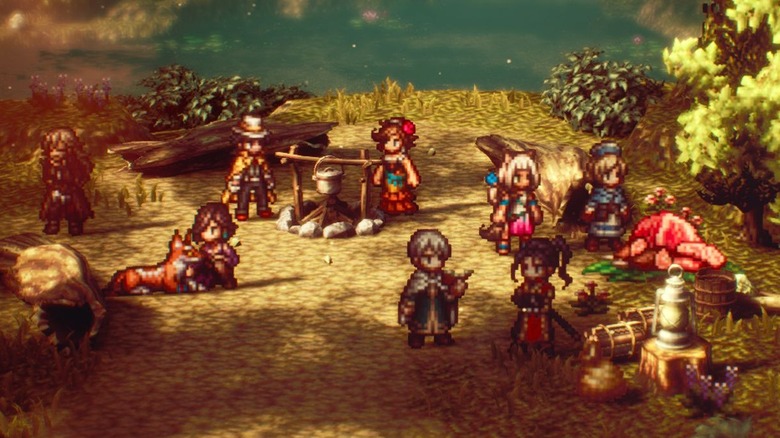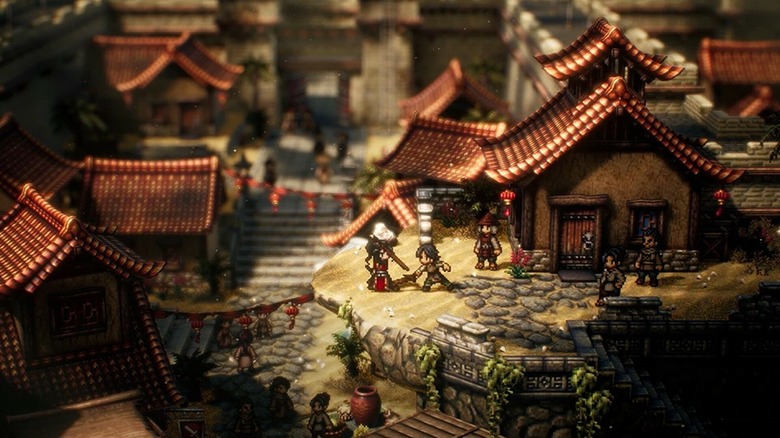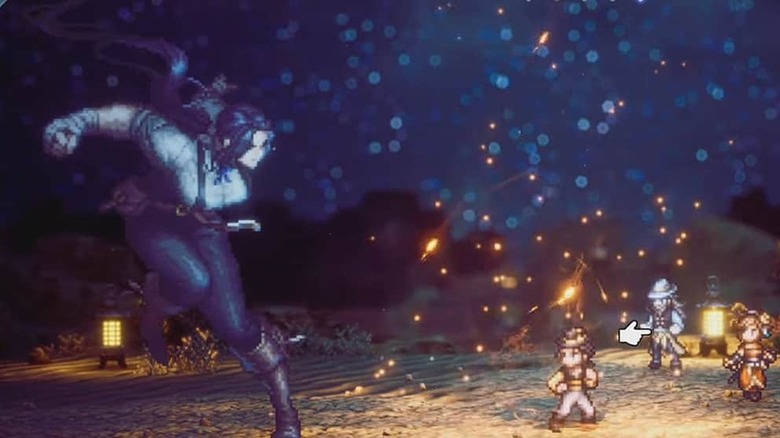Octopath Traveler 2 Review: A Solid Sequel
- Deep and challenging combat mechanics
- Engaging overworld exploration
- Fun characters and interesting storylines
- Storyline quality is very uneven
- Path abilities are underutilized
- Lack of customizable settings or accessibility options
A Switch code was provided to SVG for this review. "Octopath Traveler 2" is available now for PS4, PS5, Nintendo Switch, and PC.
The first "Octopath Traveler" was developed through a collaboration between Acquire and Square Enix to be released in 2018. It quickly caught the attention of JRPG fans thanks to its gorgeous blend of pixel art and tilt shift perspective. Upon release, it was widely praised for its visual style as well as an interesting narrative that followed eight different characters whose lives intersected with one another during their personal stories.
Now, "Octopath Traveler 2" has been released five years later to offer fans and newcomers alike an entirely new suite of stories set in an entirely new fantasy world of Solistia. This makes it a great entry for newcomers, as its collection of eight stories are disconnected almost entirely from those of its predecessor. In addition to a new world and stories, "Octopath Traveler 2" also introduces various new mechanics that add new layers to the game's exploration, combat, and narratives.
The sequel's changes manage to uphold what made so many fans enjoy the first game while adding some interesting new bells and whistles to make it feel like a step forward. However, some of the changes don't go quite far enough, especially in the realm of accessibility options and settings.
A web of narratives
The primary conceit behind "Octopath Traveler 2's" narrative is that rather than giving players a single main story to play through, the game has eight protagonists that each have their own story to explore, known as a path. Players start the game by selecting one of the eight characters to play with first, which allows them to play through a brief prologue chapter to set up their story. They are then able to go to certain towns on an overworld map to recruit the remaining seven protagonists with the option to play through each of their prologues.
This narrative structure is a very interesting one, and allows "Octopath Traveler 2" to showcase its world in a smaller and more personal way than most other RPGs can. However, it does run into a problem of quality inconsistency. There are some characters that have very engaging and unique storylines, like Osvald trying to get revenge after being framed his family's murder, or Temenos investigating the murder of a clergyman by a mysterious magical beast. But these are offset by less engaging ones that tonally clash, like Agnea wanting to be a famous dancer.
The narratives of "Octopath Traveler 2" are improved over their predecessors, however, by the sequel's introduction of some play choices and characters having more of an impact on one another's stories. This helps make the game's party feel more alive and connected, and could be taken even further in possible future entries in the series.
A beautiful world
Throughout "Octopath Traveler 2" players explore the new world of Solistia, a world divided into two continents that lie to the east and west of one another. Exploring the overworld throughout the game is overall very enjoyable, in no small part because of how beautifully presented it is. The game's graphics are an absolute standout, and the game runs great, even on weaker hardware.
"Octopath Traveler 2" also uses multiple presentation styles to accentuate and emphasize each of its scenes that help give it a lot of character. Spotlights fall on characters while the rest of the scenery darkens to convey inner monologues. Poetic blocks of narration deliver dramatic narration while the majority of the game is communicated through speech bubbles. The intermingling of so many styles does take some getting used to, but once comfortable with the approach, it serves to really accentuate the game's writing.
Exploration of the game's world is also home to each character's path abilities. Path abilities are actions that can be taken when interacting with NPCs for various effects, like fighting them for their equipment, convincing them to join your party, or just gleaning information from them. Each character has two such abilities that are connected to the game's new controllable day/night cycle. While these work decently, the abilities that each character has are far from unique, with a few being far better than others and most accomplishing the same results in slightly variations.
Fight for your life
"Octopath Traveler 2's" combat also manages to be a stand out with its offerings. Players can control a party of four characters in turn-based battles that seem very basic at first before building in complexity. This is achieved by each enemy having numerous damage types that they are vulnerable to. When hit with a vulnerable damage type, the enemy loses a layer of armor, stunning them for a turn when it is fully depleted. Party members also have a burst resource gained each turn that allows them to power up attacks, as well as new Limit abilities — unique to each character — that act like ultimates.
This combination of the new and the old allows "Octopath Traveler 2" to find the sweet spot for JRPG combat. Random encounters can be made quick enough through smart play that they do not drag or detract from the pacing, making exploration a challenge of resource management rather than outright difficulty. However, boss battles are appropriately prolonged and require players to fully utilize the game's mechanics and a balanced party to overcome them.
The game's combat is so fluid and exciting to watch that it helps keep players engaged even throughout its weaker storylines. It also is emblematic of how the sequel effectively serves as a polishing of the original "Octopath Traveler." While no aspects of the new game represent a large leap forward in scope or complexity, "Octopath Traveler 2" does more than enough to justify the investment it asks of players.




